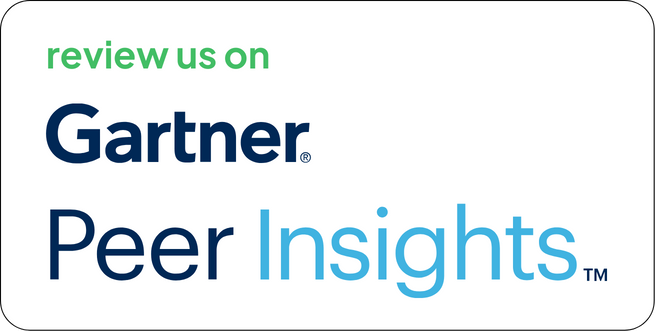Security teams are constantly dealing with rising software supply chain risk. Tools like Black Duck provide excellent visibility into third-party components and license risks, but that’s just the first layer. The real friction begins after scanning, understanding which issues carry real impact, connecting them to business context, and ensuring accountable remediation.
Strobes addresses that gap. As part of its Continuous Threat Exposure Management (CTEM) platform, Strobes integrates with Black Duck to help teams convert raw component risk into streamlined, risk-prioritized workflows.
Let’s walk through how this integration works, what it enables, and why it’s a necessary part of any modern application security program.
What Is Black Duck?
Black Duck by Synopsys is a widely adopted Software Composition Analysis (SCA) tool focused on open-source dependency scanning and license compliance. It automatically analyzes codebases for third-party components, detects known vulnerabilities (CVEs), and flags legal risks based on license usage.
Core capabilities of Black Duck include:
- Comprehensive open-source detection using signature-based scans
- Deep CVE mapping from the National Vulnerability Database (NVD)
- License risk detection across declared and transitive dependencies
- Project-based management and continuous component monitoring
But while Black Duck excels at identifying component issues, it doesn’t provide:
- Correlation across SAST, DAST, and infra vulnerabilities
- Prioritization beyond base CVSS scores
- Workflow automation to assign and track fixes
- Actionable remediation workflows based on real-world exploitability
This is where integration becomes essential.
What Is Strobes?
Strobes is an AI-powered CTEM platform designed to operationalize security findings. It centralizes vulnerability data from tools like Black Duck and turns them into structured, trackable, and prioritized tasks.
Core platform modules include:
- Risk-Based Vulnerability Management (RBVM)
- Application Security Posture Management (ASPM)
- Attack Surface Management (ASM)
- Pentesting-as-a-Service (PTaaS)
Rather than replacing scanners, Strobes acts as an intelligence layer that:
- Aggregates and deduplicates findings across tools
- Applies business risk context to prioritize what matters
- Automates remediation workflows with assignment logic and SLA tracking
- Provides unified dashboards for security, engineering, and compliance
The outcome: fewer missed risks, tighter coordination, and measurable security outcomes.
The Purpose of the Integration
The Black Duck–Strobes integration is designed for teams that:
- Use Black Duck for open-source monitoring
- Need structured remediation beyond Excel or PDF reports
- Struggle with overload from low-priority or duplicate findings
- Require alignment across Dev, Sec, and Ops workflows
- Want unified dashboards for SCA, SAST, DAST, and infra security
By connecting Black Duck to Strobes, component vulnerabilities can be enriched, prioritized, and remediated at scale.
What the Integration Actually Does?
1. Data Ingestion from Black Duck
Strobes connects to the Black Duck API to extract:
- Component metadata: Library name, version, language
- Vulnerability info: CVEs, CVSS scores, disclosure dates
- License risks: License type, risk rating
- Project scope: Affected applications or environments
Syncs can be scheduled (daily/weekly) or performed on-demand. Imported data automatically maps to the corresponding applications in Strobes.
2. Normalization and Deduplication
Once imported, Black Duck findings are cleaned and normalized:
- Duplicate CVEs across versions/components are merged
- Reopened vulnerabilities are version-tracked, not duplicated
- Findings across tools (SCA + SAST, for example) are correlated
This ensures teams don’t waste time investigating the same issue under different names.
3. Risk Scoring and Prioritization
Strobes applies a contextual risk score to each vulnerability using:
- CVSS + EPSS metrics
- Exploit availability (known PoCs, threat intelligence sources)
- Asset sensitivity (e.g., production workload vs. dev environment)
- Business context (critical service, customer data access, compliance relevance)
Teams are no longer reacting to every CVE. Instead, they’re focused on the vulnerabilities that present real-world risk.
4. Workflow Integration
Based on risk thresholds or metadata, Strobes triggers workflows such as:
- Auto-ticketing in Jira, Azure Boards, or Bugzilla
- Assignment to developers based on ownership rules
- SLA tracking with timers based on severity or environment
- Slack/MS Teams/email notifications with clear remediation paths
This turns Black Duck scans into immediate engineering tasks—no manual coordination required.
5. Unified Dashboards and Reporting
With Strobes, all SCA findings from Black Duck are visualized and reported across:
- Application-specific views (e.g., React Frontend, Backend API)
- Environment tags (e.g., prod, staging, dev)
- SLA compliance status and trend tracking
- License compliance views by component or product team
Dashboards are exportable and filterable, giving stakeholders instant answers instead of data silos.
Why This Integration Matters?
The value of the Black Duck–Strobes integration goes beyond data movement. It upgrades your SCA program with precision, speed, and traceability. Here’s how:
1. Cuts Through Component Clutter
Open-source usage is heavy. A single app can contain 300–500 dependencies, and one outdated package can result in dozens of alerts.
With this integration:
- Black Duck findings are deduplicated by component, version, and CVE
- Repetitive alerts from dependency chains are merged
- Resolved issues are closed based on verification signals or re-scans
Teams spend less time reading, more time fixing.
2. Adds Business Relevance to Every CVE
Black Duck tells you what CVEs are present. Strobes tells you:
- Whether those CVEs are exploited in the wild
- Which application or team owns the vulnerable code
- Whether the component is part of a critical production service
This filters out low-priority noise and surfaces real security obligations.
3. Automates Ownership, SLAs, and Remediation
Instead of emailing Black Duck reports, teams get structured tickets tied to:
- Developer ownership
- Remediation deadlines based on SLA policies
- Automated closure after fix verification
You get transparency and accountability without chasing updates.
4. Brings Reporting to Compliance-Grade Maturity
Export raw scan data for audit? Or generate structured reports mapped to NIST, ISO 27001, and internal policy frameworks?
Strobes enables both instantly.
5. Scales with Complex Engineering Environments
Supports:
- Microservice architectures with hundreds of repos
- Multi-region DevSecOps teams
- Containerized applications with layered component trees
No matter the setup, the integration scales with it.
6. Enables Continuous Threat Exposure Management
This integration feeds into a full CTEM cycle:
- Ingest > Enrich > Prioritize > Automate > Verify
- Risk scores and dashboards update in real-time
- Feedback loop closes only when issues are verified as fixed
It turns scanning into a continuous improvement loop.
What You Gain from This Integration?
| Challenge | What This Integration Solves |
| High volume of SCA findings | Deduplication, filtering, and prioritization |
| No context for vulnerability risk | Exploitability, business alignment, asset classification |
| Delayed remediation | Auto-ticketing, assignment, SLAs |
| Lack of cross-team coordination | Unified workflows with traceability |
| Static compliance reporting | Exportable dashboards, framework-mapped reporting |
| No post-fix verification | Real-time status updates, automatic ticket closure |
Who Uses This Integration?
Ideal for:
- Product security teams using Black Duck and struggling with visibility
- Large-scale applications with hundreds of open-source dependencies
- Enterprises requiring audit-ready license tracking
- DevOps-driven orgs needing automated ticketing and SLA workflows
Final Thoughts
Black Duck gives you component-level visibility. Strobes give you the operational system to act on it.
If you’re running scans but lacking action, this integration closes the loop from detection to decision to fix.
Want to see it in action?
Book a 30-minute walkthrough with our solutions team.





